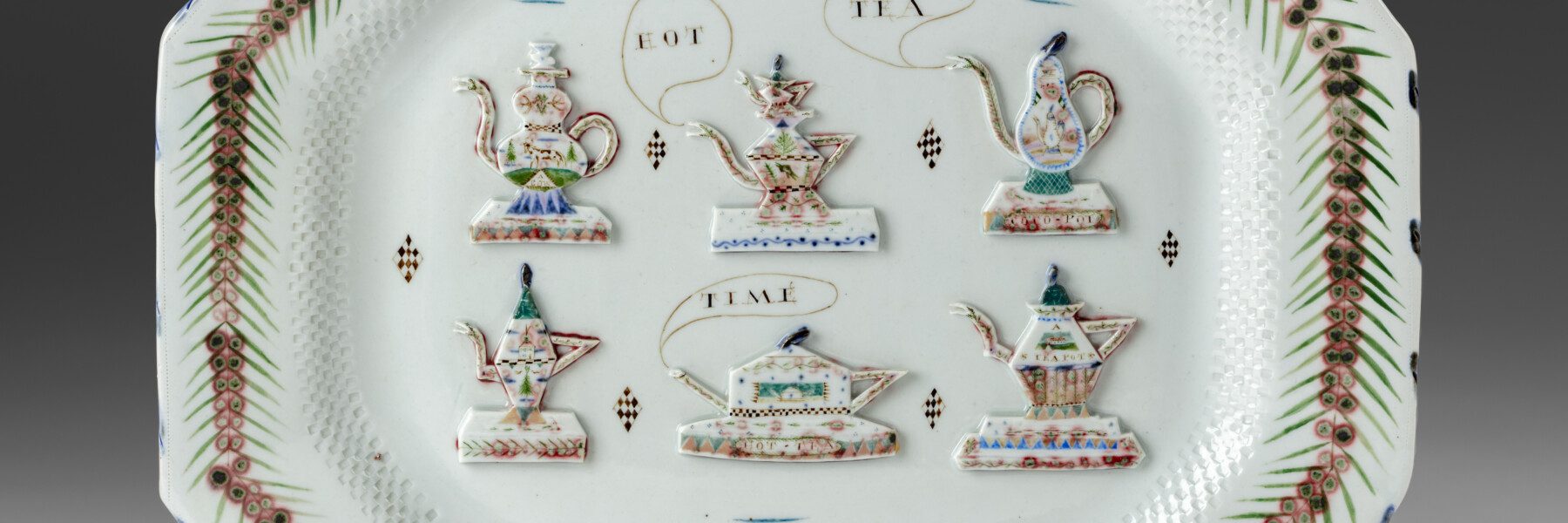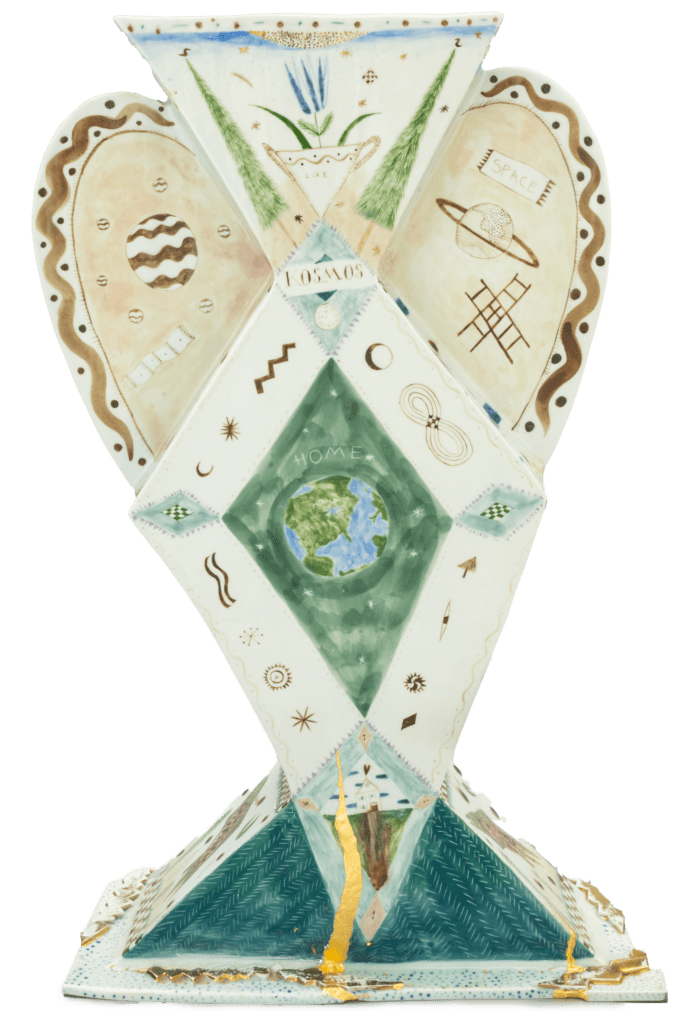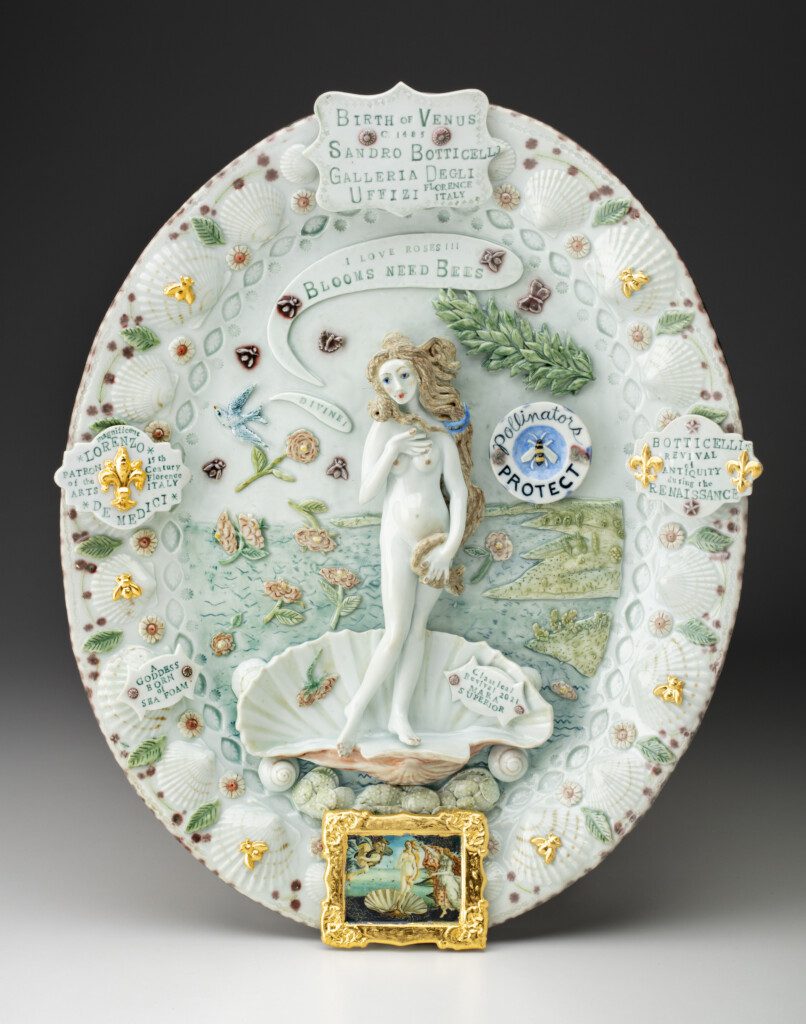Artist Mara Superior has a deep love for porcelain—a dedication that helps her master this ancient and often unpredictable material. She works with slab construction and fires her pieces in a high-temperature reduction atmosphere, techniques that make the process even more challenging and increase the risk of warping or breakage.
Trained as a painter, Superior discovered the beauty and creative possibilities of porcelain in the late 1970s. Since then, she has focused entirely on this bright but delicate material, appreciating both its fragility and its strength. She describes porcelain as a “magical three-dimensional canvas,” where she carefully paints detailed, whimsical images and adds sculpted designs to create pieces that are both visually striking and rich with meaning.
Superior’s work is inspired by many interests, including art history, patriotism, environmentalism, and everyday life at home. These themes come together to create an artistic style that feels both romantic and thoughtful. Each piece is like a love letter from the artist to the world, honoring tradition while expressing a vision uniquely hers.
Ceramics Gallery, Variety Unit











